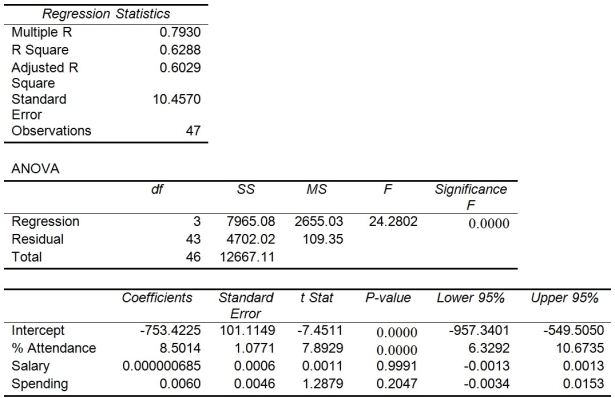TABLE 13-15
The superintendent of a school district wanted to predict the percentage of students passing a sixth-grade proficiency test. She obtained the data on percentage of students passing the proficiency test (% Passing), daily mean of the percentage of students attending class (% Attendance), mean teacher salary in dollars (Salaries), and instructional spending per pupil in dollars (Spending) of 47 schools in the state.
Following is the multiple regression output with Y = % Passing as the dependent variable,  = : % Attendance,
= : % Attendance,  = Salaries and
= Salaries and  = Spending:
= Spending:

-Referring to Table 13-15, there is sufficient evidence that the percentage of students passing the proficiency test depends on all of the explanatory variables at a 5% level of significance.
Definitions:
Net Partnership Assets
The total assets owned by a partnership after deducting all liabilities, representing the net value held collectively by the partners.
Bonus
Additional financial compensation awarded to employees or stakeholders beyond their regular payments or dividends.
Book Values
Represents the value of a company's assets according to its financial records and balance sheets, minus its liabilities and depreciation.
Investment
The allocation of resources, such as capital or time, with the expectation of generating income or profit.
Q1: Referring to Table 13-17 Model 1, which
Q3: In Germany,an employee can request up to
Q24: Referring to Table 12-13, what is the
Q39: Which of the following refers to the
Q40: Which of the following is not part
Q78: Referring to Table 12-10, the mean weekly
Q83: Referring to Table 12-8, the value of
Q125: A zero population correlation coefficient between a
Q150: Referring to Table 12-5, the partner wants
Q252: Referring to Table 13-4, suppose the builder